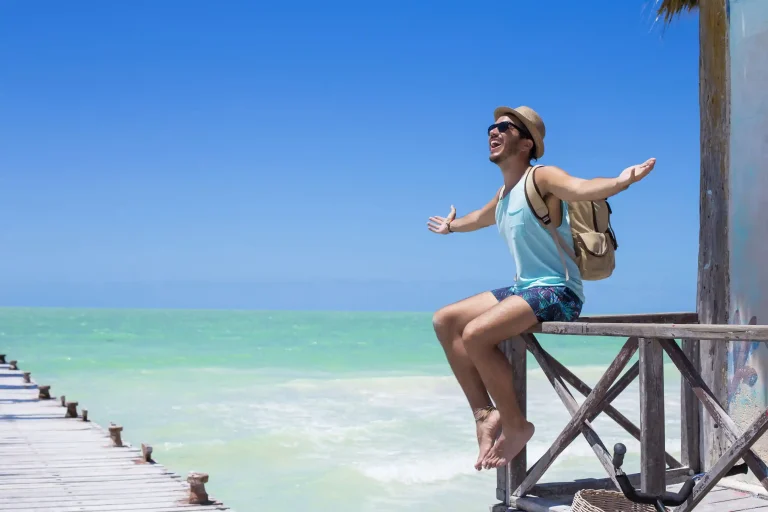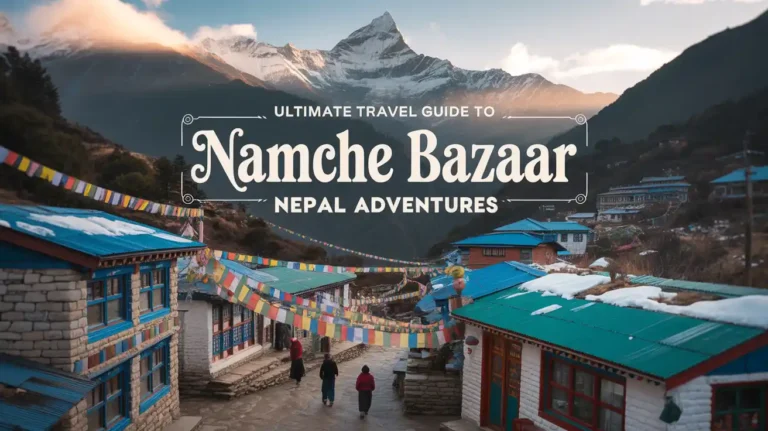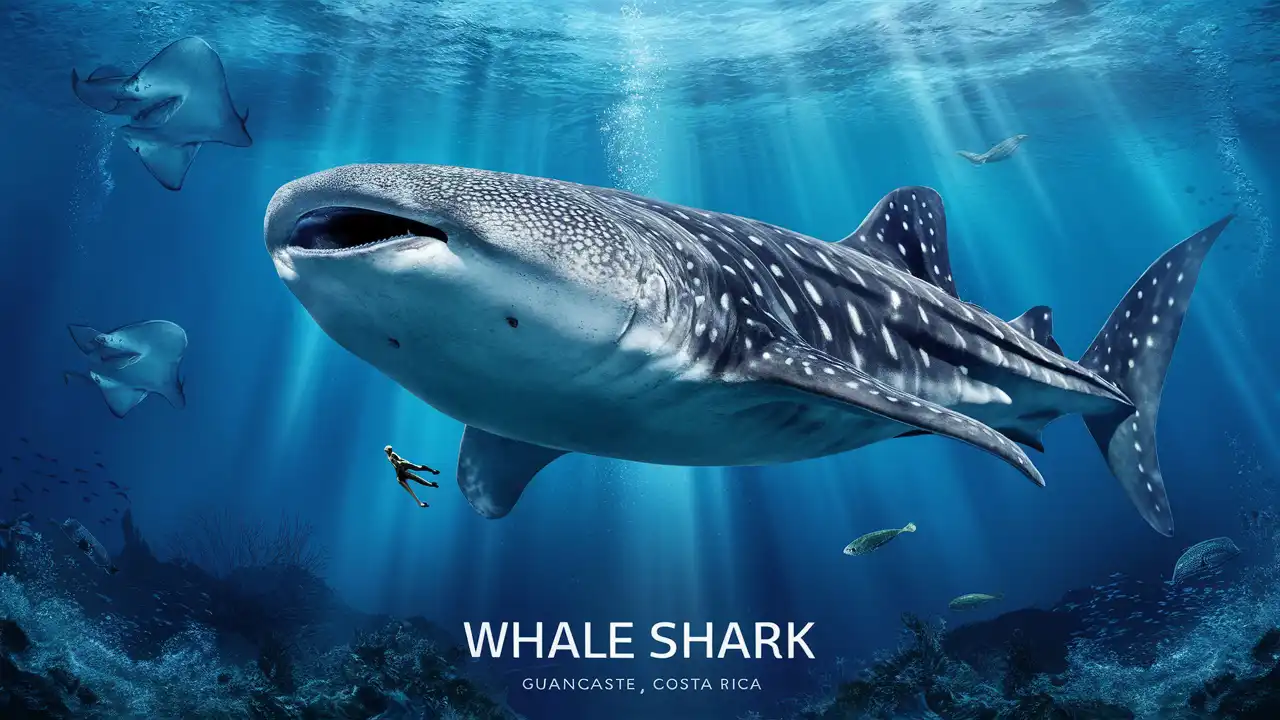
So… imagine you’re floating just offshore in Costa Rica, sun warming your back, and then—out of the blue—it happens. A massive shadow glides beneath you. Slow, graceful, surreal. It’s not a submarine… it’s a whale shark.
For many travelers, catching even a glimpse of one is bucket-list worthy. And in Guanacaste, Costa Rica, it’s technically possible—just rare enough to keep it thrilling, and just likely enough to make it worth the effort.
This guide is for the hopefuls. The curious ones. Whether you’re looking to swim with whale sharks in Costa Rica in South America or just want to know if it’s even a thing in Guanacaste… here’s what you need to know. From when and where to look, to how to do it responsibly.
No promises you’ll see one, but even the search brings you through some of the most vibrant ocean spaces in the country—and that, on its own, feels kind of magical.
📍 Where Is Guanacaste and Why It’s Great for Ocean Wildlife
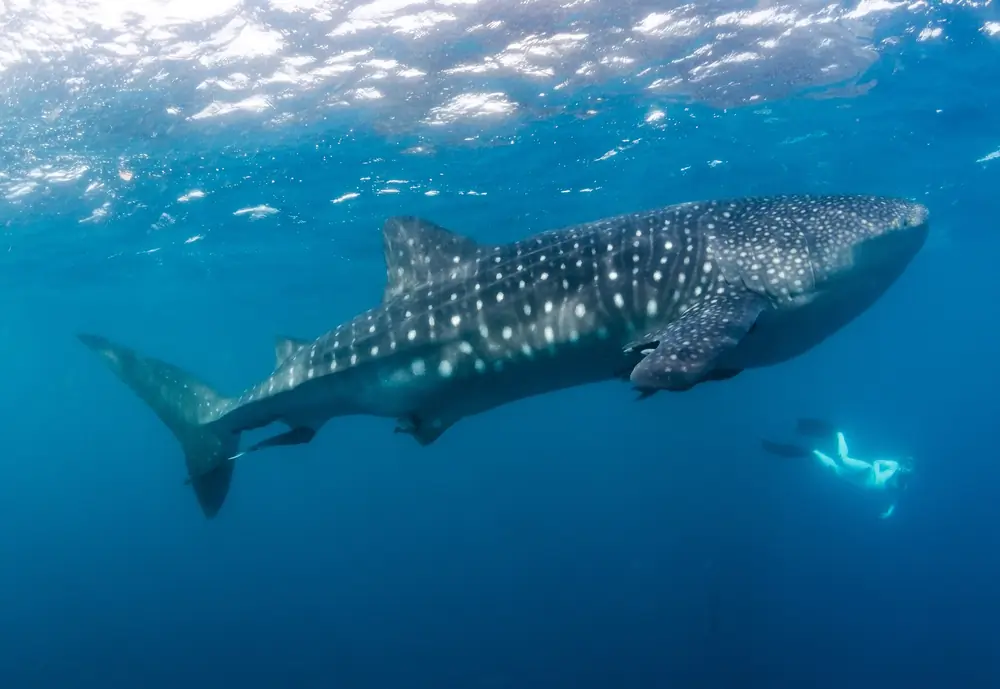
Overview of the Region
Guanacaste sits in the northwest corner of Costa Rica, hugging the Pacific. Think long sun-soaked beaches, lowland forests, and dry heat that stretches from November through April.
It’s not just beautiful—it’s biodiverse in ways that feel overwhelming in the best way. The region includes protected areas like Santa Rosa National Park and the Gulf de Papagayo. And sprinkled along its coastline are little towns that double as launchpads into an underwater realm: Playa del Coco, Playa Tamarindo, Playa Flamingo.
Scuba diving, snorkeling, surfing… they’re kind of woven into daily life here. But it’s what lies beneath the surface that keeps pulling marine wildlife lovers back—manta rays, sea turtles, reef sharks, the occasional humpback whale… and if you’re lucky, whale sharks gliding by.
Marine Biodiversity Hotspot
It’s all thanks to the Pacific currents that churn plankton-rich water toward the coast. That’s what draws in some of the ocean’s biggest visitors, including those elusive whale sharks and giant manta rays.
The Bat Islands and Catalina Islands are standout dive sites nearby. Bat Islands is known for bull sharks, while the Catalinas lean more toward rays and other friendly giants. Even the snorkeling off Playa Matapalo or around Monkey Head can surprise you with unexpected sightings.
Still, it’s not just about luck. There’s timing, too—which brings us to…
🕐 When Is the Best Time to See Whale Sharks in Guanacaste?

Seasonal Appearances
Here’s the truth: seeing a whale shark in Costa Rica is not common… but it’s possible.
The best chance in Guanacaste happens during the August to October window. That’s when plankton blooms up along the coast, thanks to cooler water temperatures moving in with the seasonal currents. And that’s exactly what whale sharks follow.
You’re not guaranteed a sighting. It’s kind of like hoping for a shooting star—you know it might not happen, but you stay up and look anyway.
Best Time of Day to Spot Them
Most tours targeting marine wildlife (whether whales, manta rays, or anything in between) leave early in the morning. The light’s better, the ocean’s calmer, and you’ll have a much better shot at spotting something just beneath the surface.
There’s something about that quiet just after sunrise that makes the water feel especially mysterious, too. Like anything could swim up from below…
🚤 Best Places and Tours for Whale Shark Spotting in Guanacaste
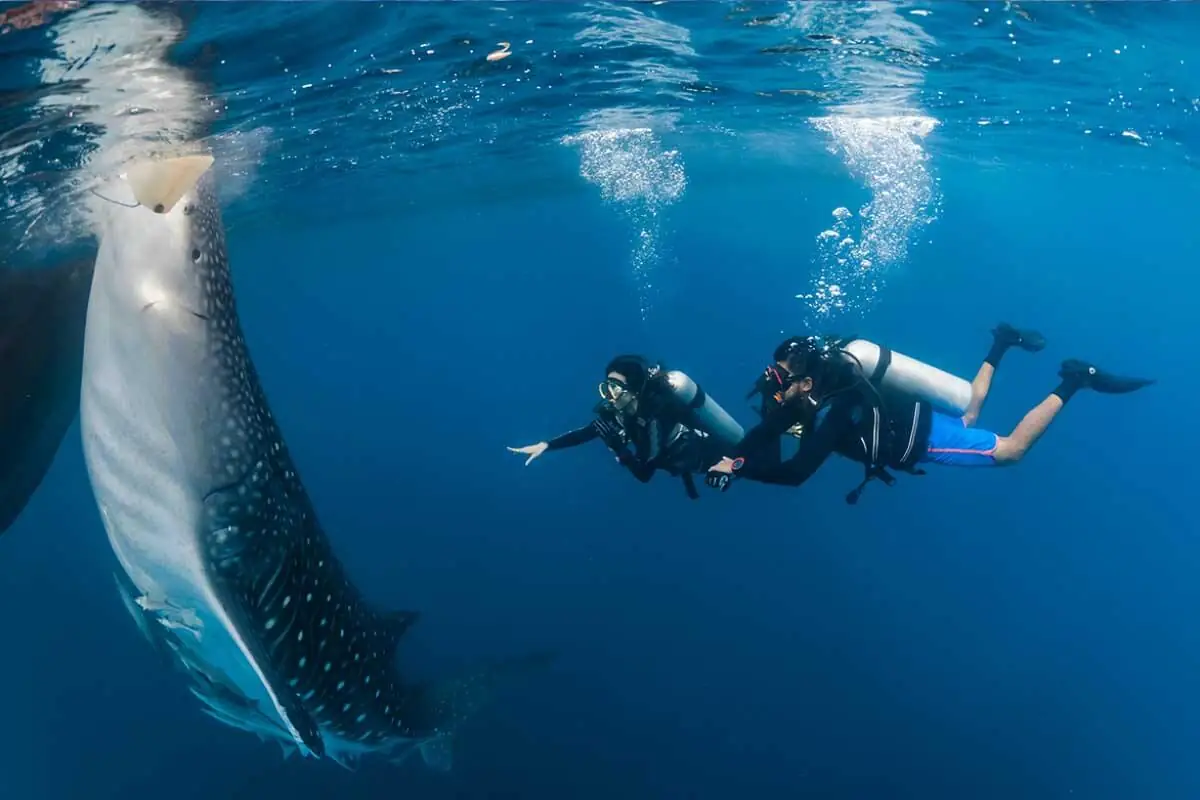
Diving & Snorkeling Hotspots
If you’re going to even hope for a whale shark encounter in Guanacaste, you’ll want to be at the right place… at the right time. And honestly, a little local luck helps too.
Here are some of the top spots where marine biodiversity is off the charts—and where sightings can happen:
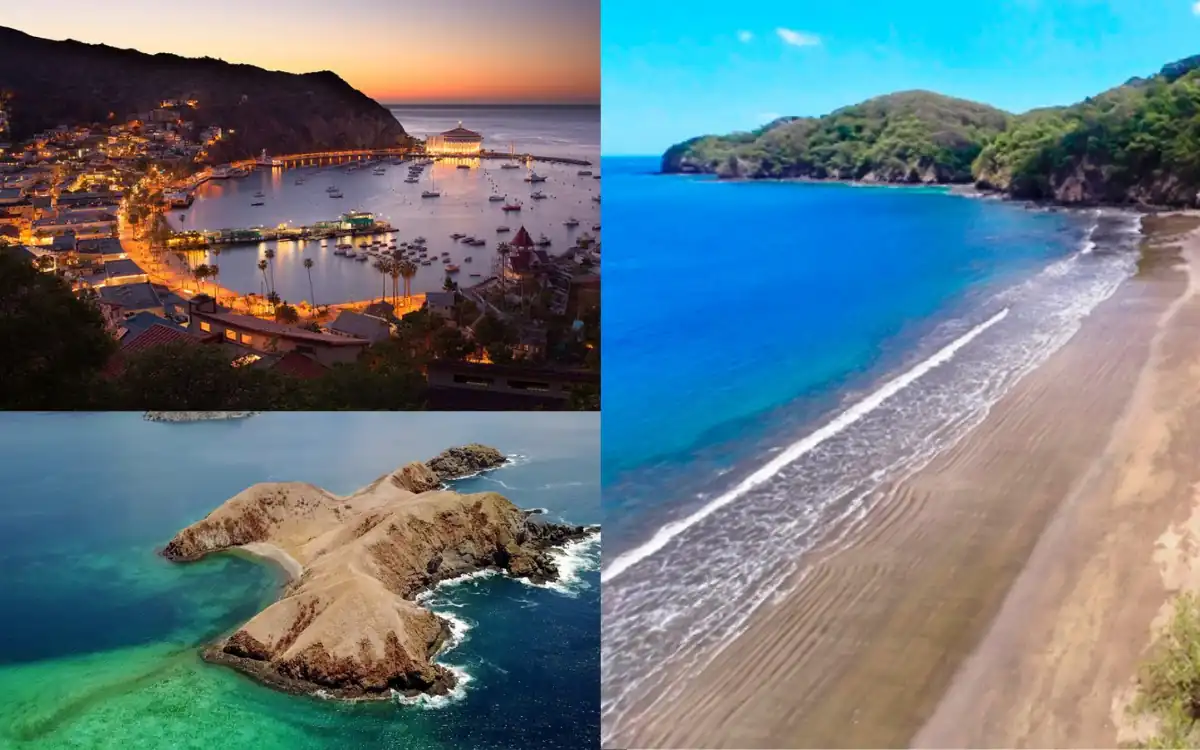
- Bat Islands (Islas Murciélago): Found in the Santa Rosa Marine Area, this is a dream for experienced divers. Known mostly for bull sharks, it also attracts other cartilaginous fishes like Devil Rays and occasionally, whale sharks. But… it’s not for beginners. Strong currents and deep dives make this a challenge.
- Catalina Islands (also called Catalinas): These volcanic islets near Playa Flamingo and Playa Tamarindo are more accessible and wildly popular among divers and snorkelers alike. Manta rays show up here seasonally, and the biggest whale shark in Guanacaste Costa Rica was actually spotted not far from here years ago.
- Playa del Coco: This beach town is home to several dive shops and operators offering daily tours out into the Gulf de Papagayo. The water here can be hit or miss depending on the day, but some snorkel tours do head out to places like Monkey Head or Turning Point.
These sites are about more than just whale sharks, though. Expect white tip reef sharks, nurse sharks, the occasional pilot whale, and some mesmerizing coral gardens with bursts of marine color that don’t need any filter.
Top-Rated Tour Operators
Choosing a good dive shop or snorkeling operator can make or break your day. The reputable ones not only provide quality gear and briefings—they prioritize safety, marine conservation, and realistic expectations.
Here are a few that stand out:
| Tour Operator | Base Location | Specialty | Notes |
|---|---|---|---|
| Rocket Frog Divers | Playa Ocotal | Scuba and snorkeling | Known for Bat Islands trips |
| Pacific Coast Divers | Playa del Coco | Open water certification, rentals | Ideal for first-time divers |
| Scuba Dive Costa Rica | Tamarindo | PADI IDC Dive Center | Also offers live aboard trips |
| Pacific Express | Playa Flamingo | Whale and shark expeditions | Fast boats with V6 Yamaha 4 Stroke engines |
Pro Tip: Look for operators with reef-safe sunscreen policies, safety protocols, and small group sizes. It’s usually a sign they care about the ocean as much as you do.
🧜 Can You Swim or Dive with Whale Sharks in Costa Rica?
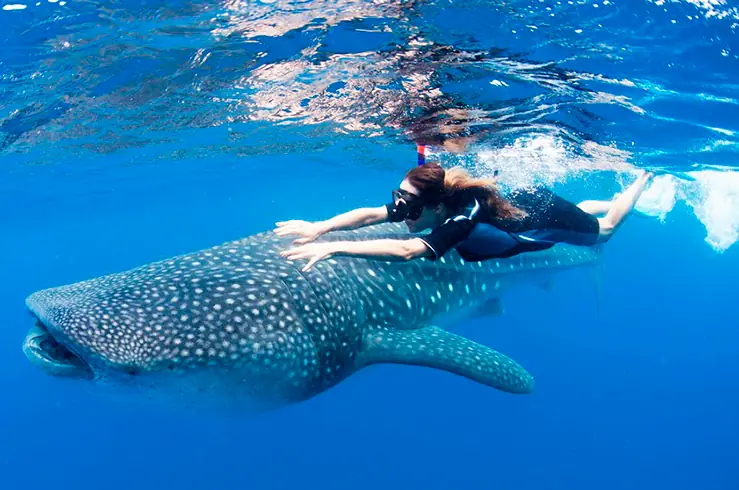
Legal & Ethical Considerations
Technically, yes… you can swim with whale sharks in Costa Rica. But it’s highly regulated—and for good reason.
These gentle giants (scientifically known as Rhinodon typus) are endangered. They’re filter feeders, not predators, but that doesn’t mean they’re invincible. Boat strikes, habitat degradation, and unregulated tourism have taken a toll on their populations globally.
So if you’re lucky enough to be in the water when one glides by…
- Stay parallel to the shark (never above or behind)
- Keep a respectful distance (usually about 3–4 meters)
- No touching. No flash photography. No chasing.
Even a gentle bump can damage their sensitive gill rakers or dorsal fins.
What It’s Like (If You’re Lucky!)
There’s no real way to explain it… swimming next to something that size—often 25 to 30 feet long—while it silently glides through the blue. It’s slow. Graceful. Almost… sleepy?
One traveler I met in Playa Grande compared it to standing beside a moving train, only underwater and somehow peaceful.
If you’re snorkeling, the good news is these creatures often hang near the surface to feed. So even without a diving certification, you’ve got a shot at spotting one. Just remember to wear a life jacket and stay calm if you do.
🌱 Whale Shark Conservation & Responsible Tourism
Threats to Whale Sharks Globally
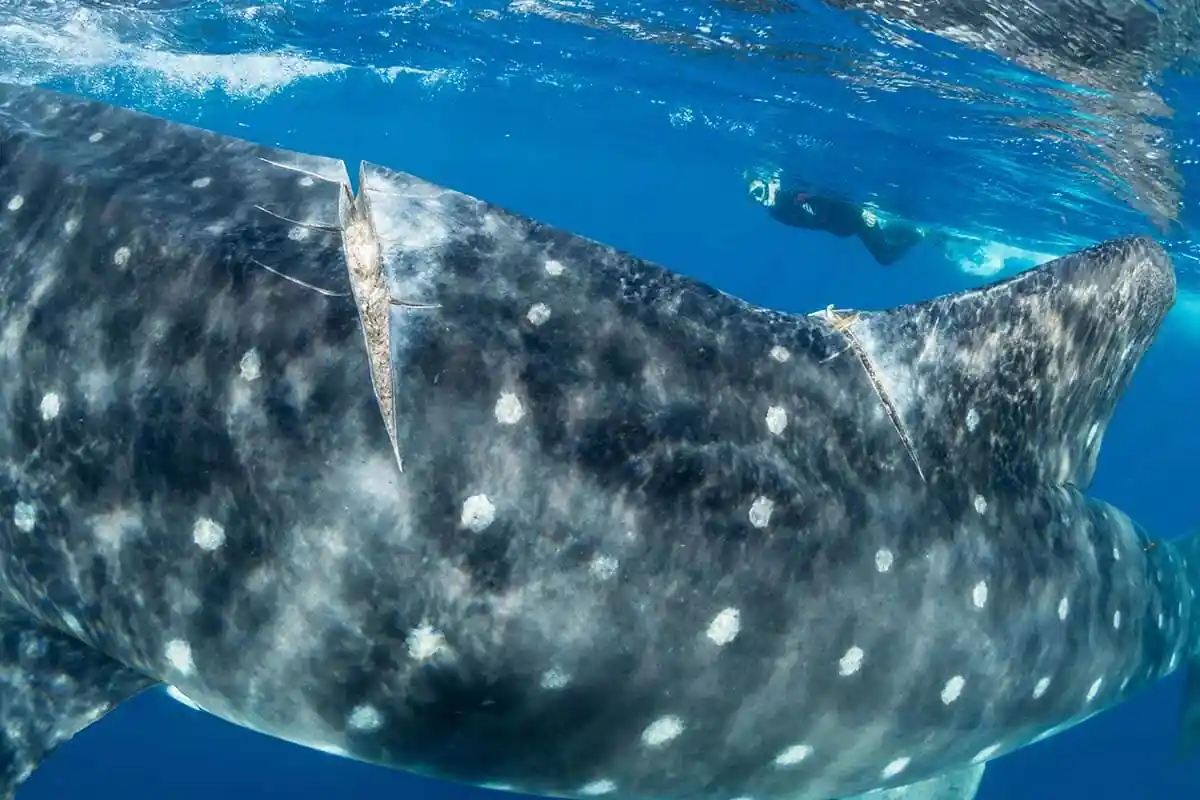
Let’s be real… even though it feels magical to be near one, whale sharks face some very real, very human challenges.
These oceanic giants are listed as endangered. And while Costa Rican waters are relatively safer, the broader threats remain:
- Boat strikes — sometimes unintentional, but still devastating
- Habitat degradation — pollution, coral bleaching, increased boat traffic
- Illegal fishing — their fins, skin, and oil are still targeted in some parts of the world
- Climate shifts — changes in migration patterns, water temperature, and plankton availability affect where they go… or don’t
Some conservation programs are doing the work — through satellite tagging, genetic analysis, and protected marine areas. But honestly, it still comes down to travelers. And what you support.
How You Can Help
If you’re already traveling with whale sharks in mind, there’s a lot you can do. It’s not complicated. It’s just… being mindful.
- Book with certified eco-operators. Not just someone with a boat. Look for licensed outfits that prioritize wildlife education and respect. (Most reputable ones in Guanacaste are aligned with park rangers or the System of Natural Protected Areas.)
- Don’t wear regular sunscreen. It messes with the water and harms coral. Go for reef-safe formulas — or better yet, wear a rash guard and skip it entirely.
- Report sightings. Several Costa Rica-based marine research groups welcome citizen observations. Photos help too. Some even work with apps that track dorsal fins for scientific purposes.
- Say no to feeding or baiting. If a tour is using chum or luring techniques, walk away. It’s damaging and completely against marine best practices.
- Spread the word. If you saw one and it changed you… talk about it. Share your experience and why it matters.
🎒 What to Pack for a Whale Shark Spotting Tour
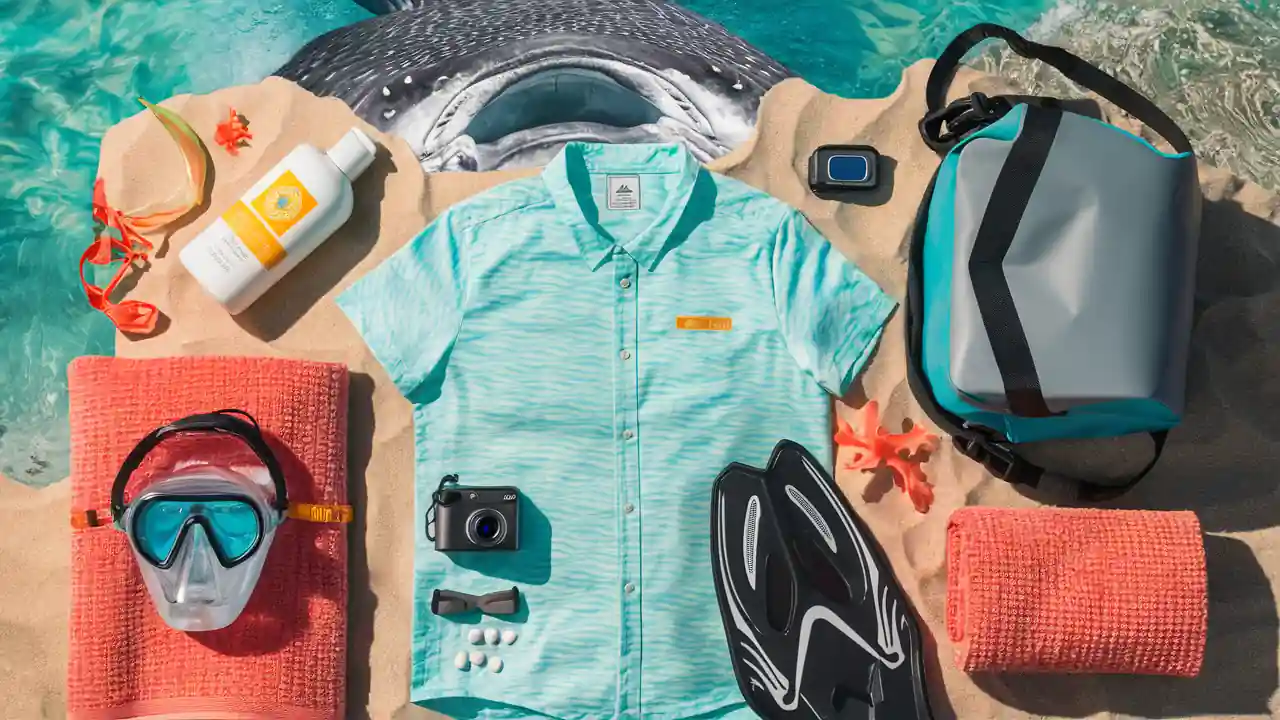
Whether you’re hopping on a snorkel tour out of Playa Matapalo or joining a scuba dive near the Catalina Islands, you’ll want to come prepared. Not in a survivalist way… just the usual smart travel kind.
Gear Checklist
Here’s a basic, traveler-tested list:
- Reef-safe sunscreen or sun shirt (seriously, can’t say this enough)
- Rash guard or wetsuit top (those early boat mornings can be chilly)
- Waterproof camera (or a GoPro with underwater housing)
- Motion sickness pills (those Pacific currents can get bumpy)
- Snorkeling equipment (mask, snorkel, fins — though most operators provide them)
- Dry bag for your phone, towel, or backup clothes
- Life jacket if you’re not confident in deep water
Physical Requirements & Prep
Whale shark tours aren’t hardcore expeditions… but they’re not for total couch potatoes either.
- Be comfortable swimming in open water. It doesn’t have to be Olympic level, just steady and calm.
- Prepare for at least a few hours on the water — bring snacks, hydrate well, and don’t forget… bathrooms might be limited.
- If diving, make sure your diving certification is current. Open water divers are usually fine, but Bat Islands may require advanced credentials.
Pro Tip: If you’ve never snorkeled before, do a practice session from the shore or a calm beach near Playa Tamarindo or Playa Flamingo. It’ll make the real thing way less stressful.
📝 Conclusion
If you’re reading this hoping for a 100% guarantee of seeing a whale shark in Guanacaste… well, honestly, that’s not how nature works. They come and go. Some seasons are better than others, and even then… it’s a bit of a waiting game.
But here’s the thing — just being out there, skimming over the Pacific, surrounded by the kind of marine life most people only see in documentaries? That alone makes it worth it. Even without a whale shark sighting, the manta rays, humpbacks, white tip reef sharks, and endless schools of colorful fish offer a front-row seat to Costa Rica’s underwater realm.
And if you do get lucky? Seeing the biggest whale shark Guanacaste Costa Rica has to offer gliding below you, like something out of a dream? Yeah, it stays with you. Probably forever.
So go in open-minded. Learn from the locals, respect the sea, bring your snorkel… and maybe, just maybe, one of these oceanic giants will appear right when you least expect it.
💬 FAQs About Whale Sharks in Costa Rica
1. Are whale sharks dangerous?
Nope. They’re gentle filter feeders. No teeth for biting — just giant mouths that scoop up plankton and tiny fish.
2. What’s the best time to see whale sharks in Costa Rica?
Your best shot is between August and October, especially around the Gulf de Papagayo and the Catalinas Islands. That’s when plankton blooms attract them closer to shore.
3. Where to see whale sharks in Costa Rica besides Guanacaste?
You might hear about the Osa Peninsula Costa Rica, Isla del Caño, or even offshore dives in the south. But sightings are rare everywhere. Guanacaste still has the best infrastructure and tours.
4. Can you really swim with whale sharks in Costa Rica?
Yes, but it’s not common. If you do encounter one, and the guide gives the go-ahead, you’ll follow very strict guidelines: no touching, no flash, no getting in their way.
5. How big are they?
Think bus-sized. Some reach over 30 feet. In Costa Rican waters, it varies — but you might come across a real giant. People have reported seeing the biggest whale shark Guanacaste Costa Rica ever logged at nearly 40 feet.
6. What if I don’t see a whale shark on my tour?
It happens. But the dive or snorkel is still worth it. You might see nurse sharks, Devil Ray, bull sharks, or pilot whales — and the coral and volcanic formations here are stunning.
7. Do I need a diving certification?
For snorkeling, no. Just basic swim comfort. For diving, yes — you’ll need at least an open water certification, especially if you’re going to Bat Islands or other deeper sites.
8. Are there beginner-friendly options?
Definitely. Places like Playa del Coco and Playa Tamarindo offer easy access to Catalina Islands, where operators like Rocket Frog Divers and Pacific Coast Divers cater to first-timers.
9. Can kids join these tours?
It depends on the operator. Some allow children 8+ on snorkeling trips with a life jacket. Just ask beforehand and check the water conditions.
10. What other marine life might I see in Guanacaste?
Besides whale sharks? Think manta rays, Galapagos sharks, sea turtles, and even the occasional blue whale. The marine life here is wild, and it’s different every time.




